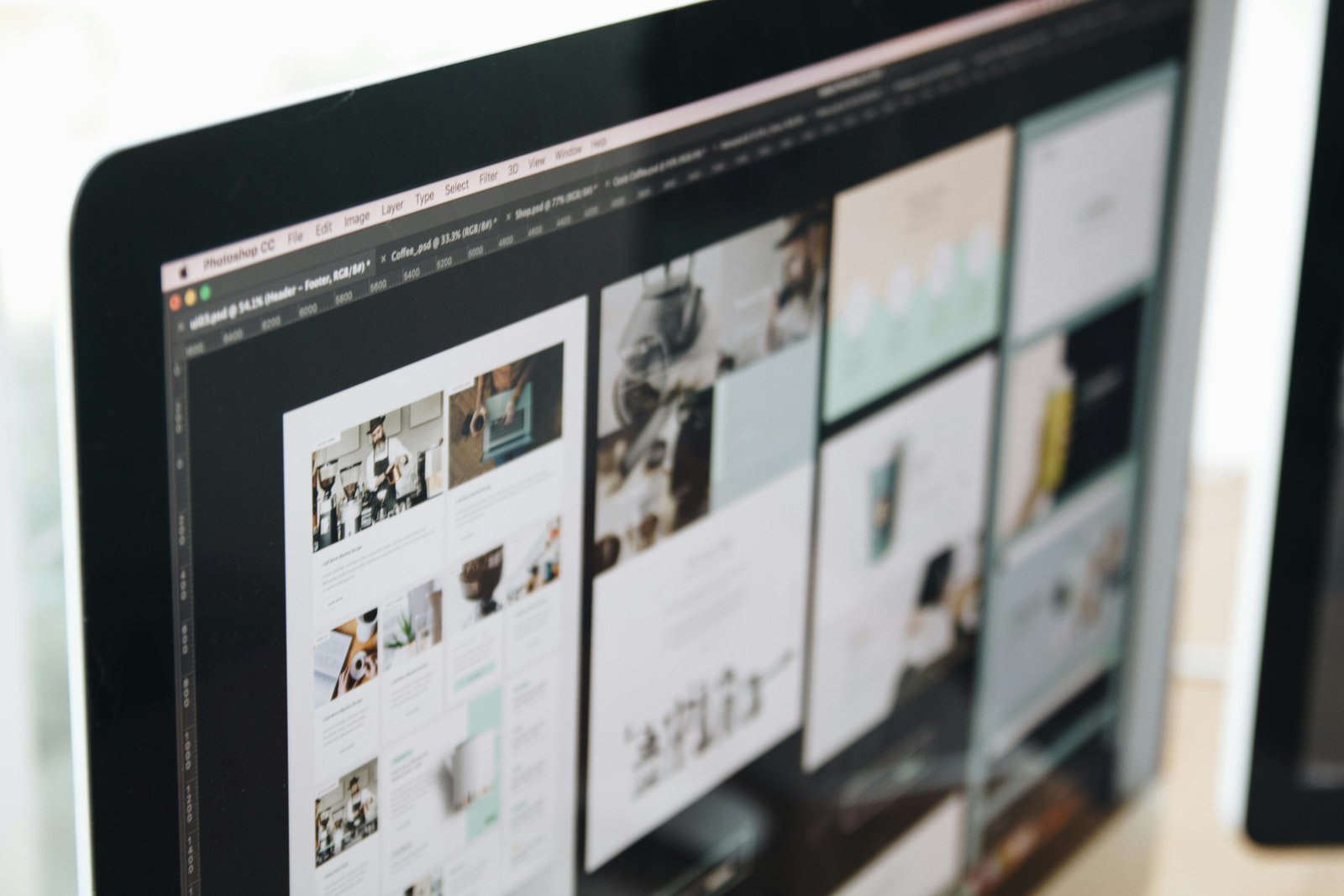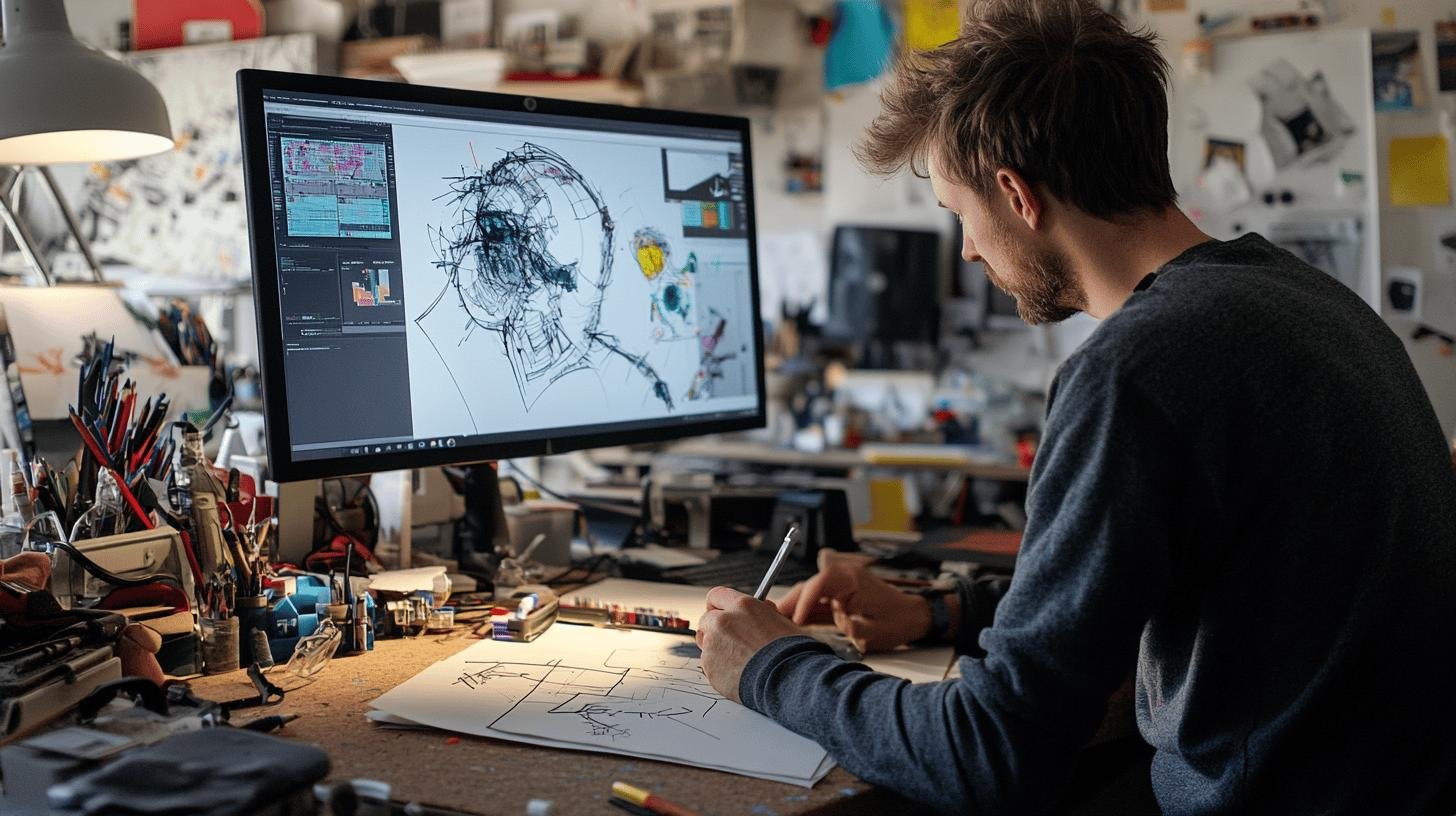Have you ever questioned whether a piece of software might complete your upcoming design project flawlessly? Seize your opportunity, as AI Graphic Design Generators are revolutionizing the creative industry! Based on your input, these potent tools create everything from infographics to logos using machine learning. Well-known brands like Canva and Adobe Sensei have already incorporated them. Are you interested in learning how these game-changers operate and what they can accomplish for you? Let’s explore the amazing possibilities of AI in graphic design and discover why it should be an essential part of any creative arsenal.
Understanding AI Graphic Design Generators
AI graphic design generators use intelligent algorithms to create designs based on your requirements. You can tell a computer what kind of logo or graphics you need, and it makes it for you. These tools can produce everything from logos to social media graphics and even infographics. Popular tools like Canva and Adobe Sensei use AI to make designing easier and faster.
These tools are handy for both beginners and professionals. For example, Canva’s AI Magic Design suite helps you create professional designs effortlessly. Adobe Sensei works within Adobe Cloud services, streamlining tasks like photo editing and layout design.
- Logos
- Social media graphics
- Infographics
- Banners
- Presentations
Benefits of Using AI Graphic Design Generators for Small Businesses

AI graphic design generators are like a secret weapon for small businesses. They save you tons of time and money by automating tasks that used to take forever. Imagine not having to spend hours tweaking a logo or a social media post. AI tools like Canva and Piktochart handle these repetitive tasks, allowing you to be free so you can focus on other important stuff.
These tools do more than save time and money. They also boost your creativity. AI can suggest cool design elements you might not have thought of, making your work look super professional. You don’t need to be a design wizard to produce high-quality visuals. Tools like Canva make it easy for anyone to create stunning designs.
And let’s talk about accessibility and affordability. Small businesses often operate on tight budgets. The good news? Many AI design tools offer affordable plans and even free versions. So, you can access powerful design capabilities without breaking the bank.
Top AI Graphic Design Generators in 2024
1. Piktochart
Piktochart is a beast when it comes to AI-powered tools. It’s not just for making pretty pictures; businesses use it to create a range of visual content. Whether you need infographics, reports, or social media visuals, Piktochart has you covered. It’s like having a Swiss Army knife for design!
2. Canva
Canva is the go-to for many because of its AI Magic Design suite. You don’t need to be a pro to make pro-level designs. Canva’s AI does the heavy lifting, suggesting templates, colors, and layouts that make your projects pop. Plus, they offer a free version, so you can get started without spending a dime.
3. Adobe Sensei
Adobe Sensei is like the wizard of the Adobe Cloud universe. It enhances a bunch of Adobe’s services, making your workflow smoother. From photo editing in Photoshop to creating layouts in InDesign, Adobe Sensei’s AI features help you work faster and smarter. It’s like having an invisible design assistant who never takes a coffee break.
4. Looka
If branding is your focus, Looka is your best friend. This tool specializes in logo and brand design. You enter your business name and preferences, and Looka generates logo options you can tweak to perfection. It’s like hiring a branding agency, but way cheaper.
5. MidJourney
MidJourney is a bit different but super exciting. It generates AI images from text prompts via Discord. You type in a description, and you get a unique image that matches your vision. It’s perfect for creative projects where you need something truly original.
How to Use an AI Graphic Design Generator

Using an AI graphic design generator is very easy, even if you are new to design. The general process is straightforward. You start by selecting a template that fits your project, whether it’s a logo, social media graphic, or banner. Then, you input your design preferences or text prompts. The AI then generates a design based on your input.
Platforms like Canva and Piktochart make this super easy with their user-friendly interfaces. Plus, they offer step-by-step guides and video tutorials, so you’re never left guessing what to do next.
What makes these AI tools even cooler is how intuitive they are. For instance, Canva’s AI Magic Design suite suggests templates, colors, and layouts tailored to your needs. Piktochart offers similar ease with a wide range of templates and design options. These platforms help you create professional-quality designs without needing a degree in graphic design.
Steps to get you started:
- Select a template
- Input design preferences or text prompts
- Generate the design
- Refine and customize the design
- Download or share the finished product
Real-World Applications of AI Graphic Design Generators
AI graphic design generators are efficient in marketing and branding. They help businesses create eye-catching visuals without needing a pro designer. Imagine crafting a stunning brand logo or a catchy social media post in minutes. These tools handle the heavy lifting, letting you focus on your brand story. Plus, they ensure your designs stay consistent, which is huge for brand recognition.
Social media graphics are easy with AI tools like Canva. You input your text and images, and the AI suggests layouts that make your posts pop. Need marketing materials? AI tools can design brochures, flyers, and banners that look super professional. For brand logos, platforms like Looka generate multiple options based on your preferences. You can tweak these until they’re just right. And when it comes to website design, AI can help create cohesive and visually appealing pages that attract and retain visitors.
Let’s talk about a real-life example. Meet “Bright Apparel,” a small clothing brand. They used AI graphic design tools to revamp their marketing. With AI, they created a consistent and professional look across all their platforms. From Instagram posts to email newsletters, everything matched perfectly. Bright Apparel saw a 30% increase in online engagement and a 20% boost in sales within three months.
Limitations of AI in Graphic Design

AI graphic design tools are amazing, but they’re not perfect. One big issue is the lack of refined creativity. While AI can generate designs based on patterns and data, it often misses the unique touch that human designers bring. Imagine asking a robot to paint a masterpiece. It might do a good job, but it won’t capture the same emotion or depth a human artist can. This means that for special projects, you might still need a human designer to add that extra sparkle.
Now, let’s talk about the ethical issues. Using AI in graphic design comes with its own challenges. First up, copyright issues. AI tools often use existing designs and images to create new ones. But who owns the final product? This can get tricky and sometimes even lead to legal problems. Then there’s the issue of bias. AI algorithms are trained on data, and if that data is biased, the output will be too. This can result in designs that unintentionally perpetuate stereotypes.
It’s important to be aware of these limitations and use AI as a complement to human creativity rather than a replacement.
- Limited creativity and originality
- Copyright issues
- Potential biases in design outputs
Conclusion
We dove into AI graphic design generators, explored their benefits for small businesses, and reviewed top tools like Piktochart and Canva. I also shared tips on how to use these tools and showcased real-world applications in marketing and branding.
AI tools can save time, cut costs, and boost creativity. But they can’t replace the human touch.
Using an AI graphic design generator offers exciting possibilities. Just balance it with your creative flair and ethical awareness. Stay curious and keep experimenting!
FAQ
Can AI graphic design generators replicate specific design styles or trends over time?
Yes, many AI tools can adapt to various design styles by learning from your inputs or datasets, though they may have limitations in creativity and trend forecasting.
How do AI graphic design tools handle accessibility standards like color contrast and font readability?
Some AI tools are designed to recognize and suggest accessible design practices, but the level of compliance varies, and manual checks may still be needed.
Can AI design generators create multi-language designs for global audiences?
Yes, certain AI tools can accommodate multi-language text in designs, but users may need to adjust layouts manually to ensure proper text alignment and spacing.
What role does user data play in enhancing the performance of AI graphic design tools?
AI generators often improve with user feedback and usage patterns, enabling more personalized and context-aware design recommendations over time.
How do AI graphic design tools manage file compatibility with traditional design software like Adobe or Figma?
Most AI tools support common file formats (e.g., .png, .svg, .psd), allowing seamless export and integration with traditional graphic design software for further editing.




